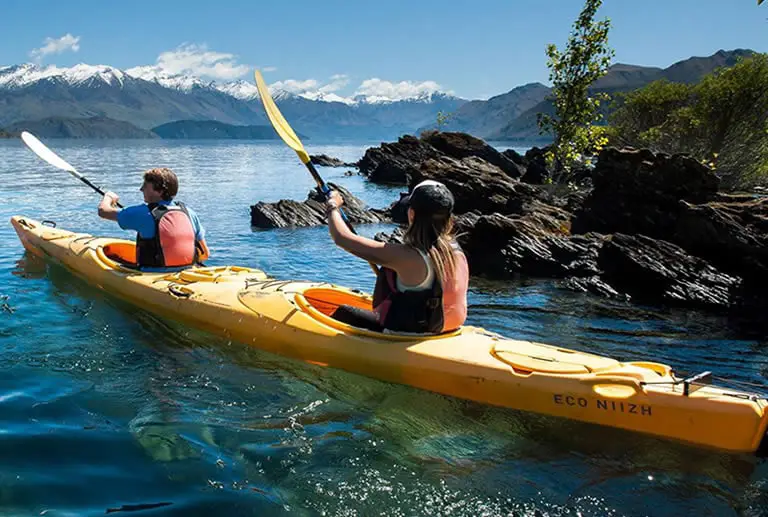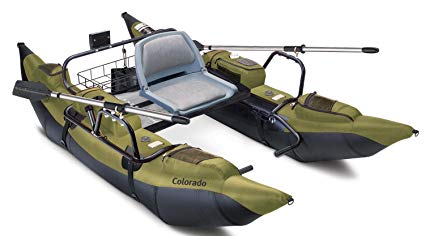A flat bottom kayak offers exceptional stability in calm waters such as rivers and lakes.
Flat bottom kayaks are a great choice for beginners and experienced paddlers who want a leisurely paddling experience in calm conditions.
Contents
Kayak design
Kayaks come in a number of different hull designs, styles, lengths and widths. I covered the different types of kayak in this article which highlights the best uses for each type of boat.
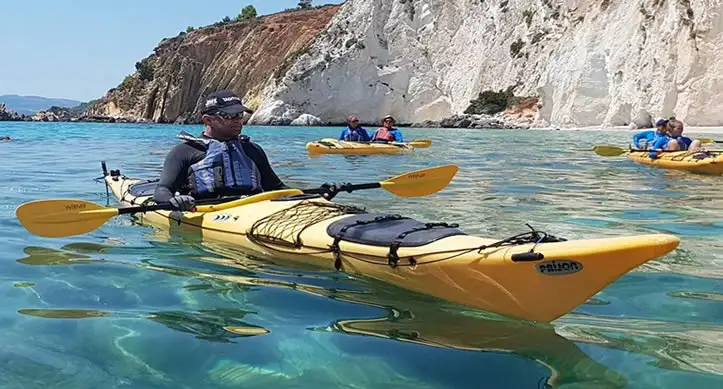
A flat bottom kayak is the boat that most beginners will first use when they begin their kayaking journey or when they venture onto the water for a leisurely day trip down a river or on a lake.
This is because the flat bottom hull design offers the most stability in calm waters and its shallow draft also means the boat can navigate very shallow waters.
Some people knew to kayaking are mistaken thinking that a flat bottom kayak, or recreational kayak as they are often called, is a beginner boat.
This is not the case.
Just because a flat bottom kayak is good for beginners that does not mean it is a beginner boat!
A fat bottom kayak is perfect for calm recreational use and just happens to be a good fit for a beginner.
Of course there are disadvantages to having a flat bottom as we will see later.
What is the bottom of a kayak called and why is its shape important?
The bottom of a kayak is often referred to as “the hull” (although in reality the hull is really the entire watertight body of the boat).
This is why the hull of kayak will usually be referred to as:
- Round hull.
- V-shape hull.
- Pontoon hull.
- Flat bottom hull.
The top of the kayak is referred to as the deck.
The bit you sit in is called the cockpit.
You can learn more about the design considerations of a kayak in the article What is a Kayak.
The bottom of a kayak, or any boat, is one of the biggest determining factors in how the boat can be used.
While a flat-bottomed-hulled kayak offers superior stability and very easy handling in calm waters the same design can be downright treacherous in very choppy waters.
A kayak with v-hull is much better in choppy waters because it can slice through waves and choppy water much better than a flat-bottomed kayak.
However, it is less stable on calm water and not as easy to handle – it feels tippy.
Let’s take a quick look at the hull designs associated with kayaks and see how they affect a kayak’s performance in specific environments.
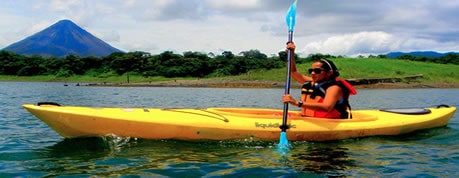
Why use a round hull kayak
A kayak with a round hull offers more speed and great manoeuvrability.
Unfortunately though, this increased speed comes at the expense of stability.
The rounded bottom of the boat allows it to move through water very quickly but it is very easy to tip to one side or the other.
V-shaped hull
A kayak with a v-shaped hull is great for navigating choppy waters.
Compared to a round hull the v-hull (so called because the bottom resembles a “V” shape) allows the kayak to cut through water better making it more effective at tracking in straight lines and handling waves.
It can also feel tippy in calm water.
Pontoon hull
A pontoon hull is so called because it has a two piece hull design like a pontoon boat.
Pontoon kayaks offer a great amount of stability and so they are popular as one-person fishing boats.
Flat bottom hull
Flat bottom kayaks are great play boats.
They are most often the preferred boats for inland waterway usage on lakes, calm rivers and you may sometimes see kayaks paddling beside narrowboats and canal boats along canals and rivers.
Flat bottom kayaks are almost always the type of kayak that a beginner will use due to their exceptional stability in calm waters.
Why?
Because a beginner should not start by trying to ride rapids or navigate the open ocean far from shore.
Flat bottom kayaks are also very easy to paddle and are harder to tip in calm water compared to the other hull designs.
If you are a beginner or you just want a leisurely day paddling in calm waters, a flat bottom kayak is by far the best choice.
As you can see from the above explanations of the boats’ bottom these different kayak hull designs are suited best to different applications and different environments.
However, when it comes to a kayak it isn’t just the bottom of the boat that matters!
It’s not just the bottom you need to consider
A kayak is slightly different from other boat types because you must consider the design of the sides of the boat as well as its bottom.
The shape of a kayak’s sides plays a key role in the stability of the boat.
A simplistic (but fairly accurate) way to view how the design of a kayak effects how it interacts with water is to think in the following terms:
The design of the bottom of a kayak affects something called primary stability – how stable the boat is in calm water.
The design of the sides of a kayak affects something called secondary stability – how stable the boat is in choppy water.
How primary and secondary stability affect a kayak’s performance
Now that you know what design aspects affect primary and secondary stability it’s time to see how these two factors affect how a kayak performs in certain conditions and environments.
A simple way to view how primary stability and secondary stability are determined is to think in the following terms:
- Primary stability refers to how stable the boat is when it sits on the water, i.e. how resistant it is to capsizing when sitting on calm water.
- Secondary stability refers to how stable the boat is when it is rocked in the water, i.e. how stable it is when it turns on its side or is rocked from side to side.
To better illustrate this point let’s look at a flat bottom kayak and how it differs from a round bottom kayak.
A flat bottom kayak has a great amount of primary stability because the bottom has a large flat surface that sits on the water, making it very stable.
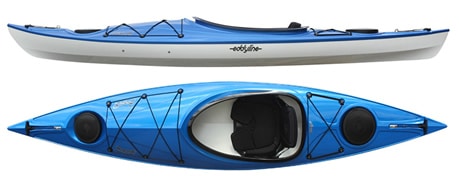
The boat sits “firm” on the water and is harder to tip (as long as the water is reasonably calm).
Because a flat-bottomed kayak has great primary stability it is harder to capsize on calm waters.
If the boat is tipped however, by large waves for example, it will be harder to keep it stable.
A round-bottomed kayak has poorer primary stability because it is easy to rock the boat from side to side even in calm waters. Simply repositioned yourself on the kayak or looking around is enough to rock the boat.
However, the boat’s ability to stay stable in choppy waters, because it can be rocked from side to side, gives it great secondary stability.
Best recreational kayaks
What is the best recreational kayak?
Well, that is not as straightforward a question to answer as you may think.
Because kayaks are used in a variety of different recreational pursuits no one kayak is best suited to all of them.
As we discussed above the primary and secondary stability are not the same on different kayaks.
This means the primary and secondary design characteristics of one type of a kayak will be a better boat for one activity while making it a bad choice for another.
For whitewater rapid riding, for example, there are specific types of whitewater kayaks, also known as river kayaks.
These kayaks are designed to best handle the rapids while still being able to stay very stable in calm water.
For fishing in coastal areas many fishing kayaks are designed to incorporate different aspects of primary and secondary stability.
A fishing kayak will have sufficient secondary stability so the boat can navigate ocean waters but will have enough primary stability to be stable enough to fish off.
The same compromise on primary and secondary stability is needed for many different kayaking activities. Some kayaks have better primary stability while others have better secondary stability.
Therefore many modern kayaks are hybrids using clever combinations of primary and secondary stability design factors.
I have listed the best types of sit-in kayaks for specific activities, with some specific boat suggestions, here.
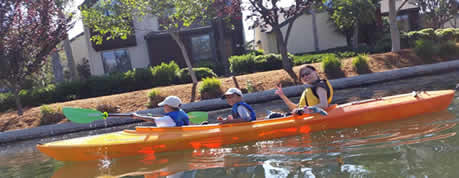
However, if you intend to have a family outing on a typically calm inland waterway then a flat bottom kayak is mostly likely your best option.
These boats are so stable that they are the preferred kayak for children and families.
Unless you plan to whitewater kayak or go on rivers and weirs that have challenging choppy waters a flat bottom kayak is the best choice for inland waterways.
Flat-bottomed kayaks are fun, safe and you can even get boats that will accommodate three people.
Flat bottom boat vs kayak
Should you get a flat bottomed boat or a kayak?
Good question!
Let’s look at the pros and cons of each choice to see which boat type is a better fit for you.
A flat-bottomed boat, such as a Jon boat or flat bottom canoe, can access shallow waters just as easily as a kayak, so there is neither an advantage nor a disadvantage with either choice on that front.
Most Jon boats are quite narrow and can navigate the same narrow bodies of water that a kayak can.
Even traversing the very narrow canals of Britain would give a Jon boat no trouble – though due to the notorious British weather flat-bottom Jon boats are not very popular.
So, when it comes to navigating narrow stretches of water both boat types are equally well equipped – no clear winner here either.
As a small flat bottom boat can do anything that a kayak can do in calm waters the choice between the two really depends on how you intend to use the vessel and if you intend to use it in open water.
Although people do use Jon boats in the ocean sea kayaks have a design that makes them much better at navigating choppy waters.
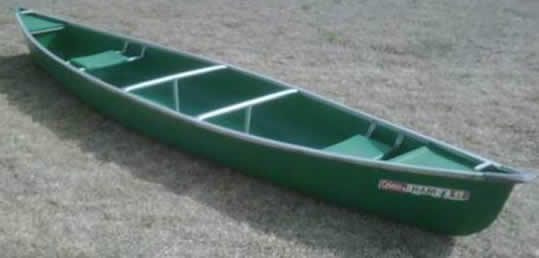
Likewise, many fishing kayaks are also better able to handle choppy coastal waters making them a better choice than a Jon boat, canoe or even a larger flat-bottomed skiff in challenging weather conditions.
Space on the boat is another thing to factor into your decision.
For example, if you fish and hunt then storage may be a concern for you.
A Jon boat offers much more storage space than a kayak and you can move about on a Jon boat while you are usually kept stationary in a kayak.
Additionally a Jon boat, or other flat bottom boat, can be powered by an outboard motor when travelling longer distances and you can always switch to a paddle when the need arises.
This makes a flat bottom boat a better water “traveller”.
On the flip side a kayak is a much better “traveller” on land. There is no need for a trailer when using a kayak as it can fit on a roof rack.
It is also easy for just one person to physically move a kayak from vehicle to water.
Although a Jon boat has a lot of extra benefits over a kayak if you merely want to enjoy a leisurely cruise on the water then a kayak is all you need.
However, if you buy a one-man kayak and at some stage want to invite friends and family onto the water then you will need to source additional boats.
Price should also be a factor to consider.
Although you can source a good Jon boat reasonably cheaply, as I outlined in this article, a kayak, no matter how expensive, it is will always be a cheaper option.

